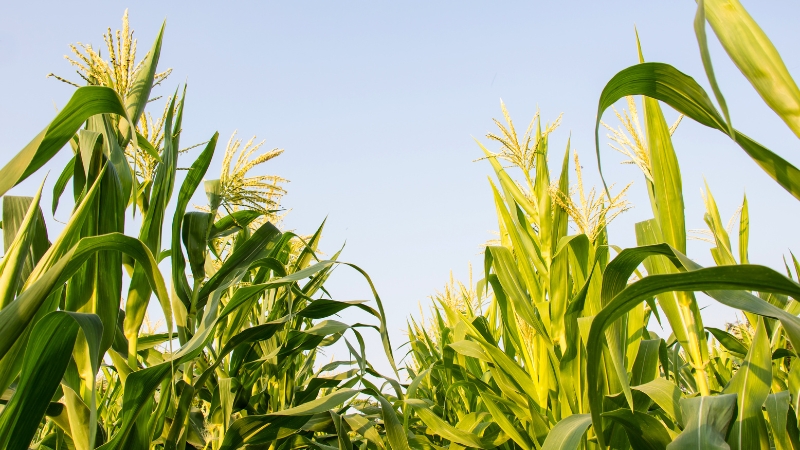In 2025, the U.S. Congress reintroduced the Farm Workforce Modernization Act (FWMA), a comprehensive proposal to address the twin challenges of labor shortages in agriculture and the long-standing uncertainty faced by immigrant farmworkers.
Agriculture in the U.S. relies heavily on foreign-born labor, estimates from the Department of Agriculture suggest that between 45% and 50% of crop farmworkers lack authorized legal status.
At the same time, growers face critical shortages that threaten production, with some reports indicating that more than $3 billion in crops go unharvested annually due to labor constraints.
The FWMA attempts to tackle both issues by creating pathways to legal status for existing undocumented agricultural workers and by modernizing the H-2A visa program for future labor needs.
While similar bills have failed in past years, the 2025 version is seen as particularly urgent as the U.S. grapples with food inflation, supply chain fragility, and rising demand for farm labor in states like California, Texas, and Florida.
Background: Labor Shortages and Immigration in Agriculture

Agricultural labor has been a chronic policy problem for decades. Unlike other industries, farming is uniquely dependent on seasonal and physically demanding work that often struggles to attract U.S.-born workers.
The reliance on immigrant labor has created structural tensions between immigration policy and agricultural production.
- Farmworker Demographics: Roughly 70% of U.S. crop farmworkers are foreign-born, and nearly half lack legal work authorization.
- Wages: The average farmworker earns about $15.65 per hour, compared to a national average of $23.
- Shortages: The American Farm Bureau reports that some growers have cut acreage or abandoned crops due to a lack of labor.
Without reform, producers warn of continued crop losses and growing dependence on imports. Workers, meanwhile, remain vulnerable to exploitation and deportation under the current system.
Core Provisions of the 2025 FWMA
The bill introduces several major reforms, balancing legalization pathways with stricter work verification requirements.
| Provision | What It Does | Impact on Workers | Impact on Employers |
| Certified Agricultural Worker (CAW) Status | Creates a legal status for undocumented workers with at least 180 days of farm work in the last two years | Provides temporary protection from deportation and work authorization | Stabilizes labor supply, reduces turnover |
| Path to Green Card | Workers with CAW status can apply for permanent residency after 4–8 years of continued agricultural work | Offers long-term stability and family security | Incentivizes retention of skilled workers |
| H-2A Visa Reform | Expands H-2A visas to include year-round jobs (e.g., dairy) and streamlines the application process. | Broadens labor pool for seasonal and permanent needs | Reduces bureaucratic delays |
| Mandatory E-Verify | Requires all agricultural employers to use E-Verify to confirm work authorization | Ensures new hires are legally authorized | Increases compliance costs, but levels the playing field |
These reforms are designed to legalize the existing workforce while ensuring that future labor needs are met through lawful channels.
Worker Protections and Rights
CDM in the news: “New protections empower H-2A agricultural workers to organize” by @TheTinaVasquez via @prismreports https://t.co/Kp5W2IIxJm
— Centro de los Derechos del Migrante (@CDMigrante) July 11, 2024
Unlike previous immigration-focused bills, the FWMA includes a stronger emphasis on labor rights. Workers obtaining CAW status would be entitled to:
- Full federal labor protections under the Fair Labor Standards Act and the Occupational Safety and Health Act.
- Access to collective bargaining protections where permitted by state law.
- Protections against excessive recruitment fees in the H-2A system.
For workers long vulnerable to wage theft and unsafe conditions, these provisions could represent a step toward parity with other sectors of the U.S. labor force.
Economic Implications of the FWMA
The economic impact of the FWMA could be substantial.
| Area | Current Challenge | FWMA Impact |
| Food Prices | Labor shortages drive up costs for consumers | A stabilized workforce could ease price volatility |
| Farm Productivity | Billions of crops are lost annually | A more reliable labor supply improves harvest rates |
| Employer Costs | High turnover, recruitment expenses | Legal status reduces turnover, E-Verify adds costs |
| Tax Revenue | Undocumented labor contributes less to payroll taxes | Legal workforce expands contributions to Social Security & Medicare |
The Congressional Budget Office (CBO) previously estimated that earlier versions of the FWMA would increase federal revenues by billions over 10 years, primarily from higher payroll tax compliance.
Political Debate: Support and Opposition

- Supporters: Agricultural industry groups, farmworker unions, immigrant rights organizations, and many Democrats argue the bill is necessary to secure the food supply and protect essential workers.
- Opponents: Some Republicans and restrictionist groups argue the bill rewards unauthorized migration and could incentivize future inflows, while business associations object to the costs of mandatory E-Verify.
This political divide reflects the broader immigration debate: balancing economic needs against enforcement concerns.
Federal vs. State Authority
Another layer of complexity lies in the relationship between federal law and state-level regulation. Some states, like California, already have strong farmworker protections, including overtime laws for agricultural workers. Others, like Texas, do not.
| State | Current Labor Standards | Interaction with FWMA |
| California | Over time, rest breaks, heat standards | FWMA adds legal status to the workforce but keeps state protections intact |
| Florida | Limited worker protections | FWMA provides a new federal baseline absent at the state level |
| Texas | Minimal labor protections | Employers benefit from a legalized workforce, but conditions remain weak |
The FWMA would set national immigration and work authorization standards, but states would still control workplace conditions. This creates uneven experiences for workers depending on geography.
Long-Term Implications for U.S. Agriculture
If passed, the FWMA could transform U.S. agriculture over the next decade:
- Stabilized Workforce: Legalization would reduce the churn of undocumented workers moving in and out of the industry.
- Higher Retention Rates: Pathways to green cards create incentives for workers to stay in agriculture rather than shift to other industries.
- Industry Modernization: Employers could focus on improving productivity instead of navigating constant labor shortages.
- Continued Political Tensions: The bill will not end disputes over immigration enforcement, border security, or wage standards.
Conclusion
View this post on Instagram
The Farm Workforce Modernization Act of 2025 represents one of the most ambitious attempts in decades to reconcile U.S. immigration policy with the realities of agricultural labor.
It offers a pragmatic compromise: legalization for current undocumented farmworkers, modernization of the H-2A program for employers, and mandatory verification to address enforcement concerns.
For farmworkers, the bill could mean the difference between living in fear and working with security. For employers, it could stabilize the labor supply and reduce costly disruptions.
For the nation, it represents a test of whether bipartisan immigration reform is still possible in a polarized political climate.
If the FWMA passes, it will not solve every problem in agriculture, but it will mark a historic step toward aligning labor policy with the economic backbone of U.S. food production.

